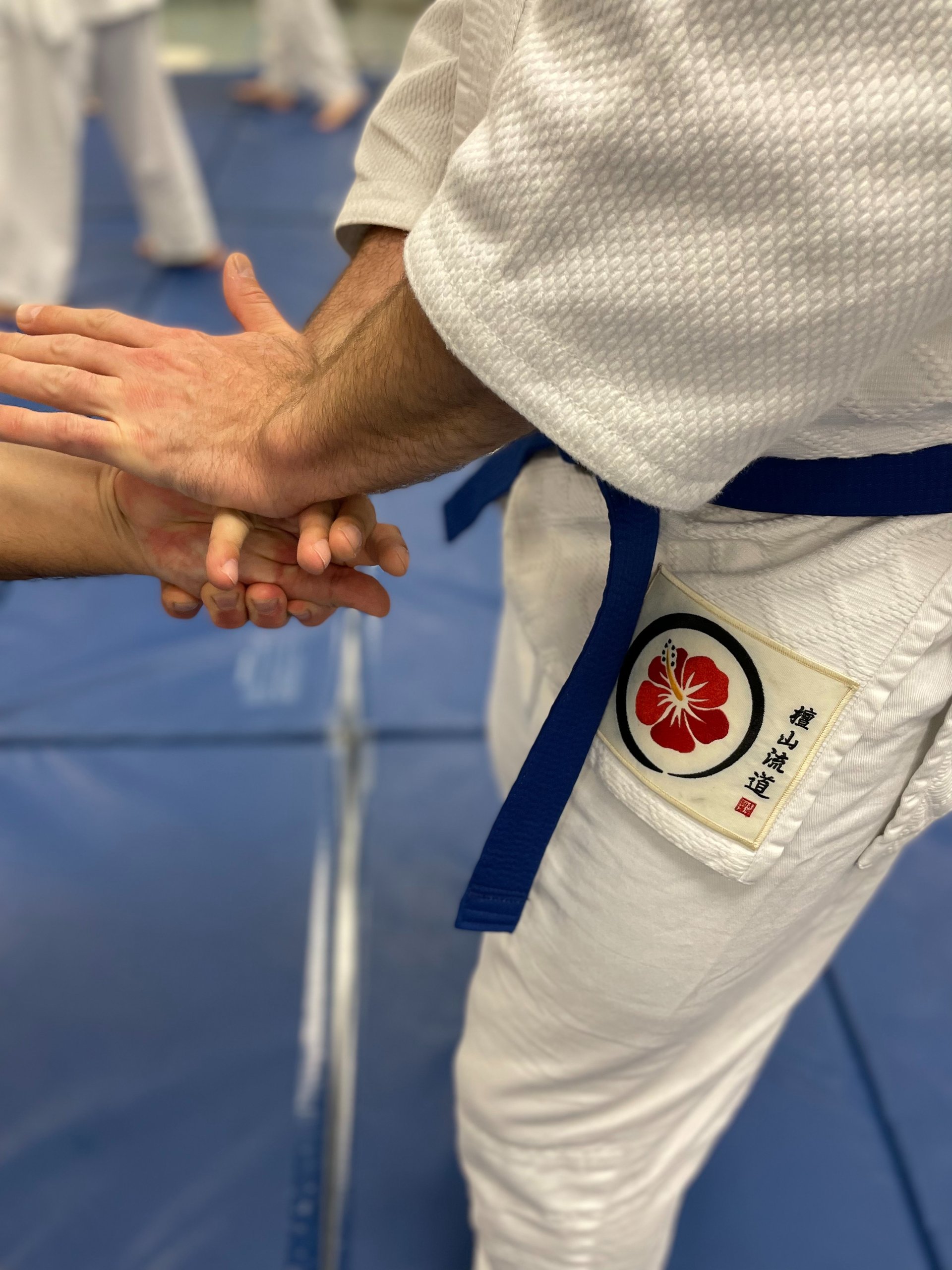Yielding
More on Ju
Question: What makes Ju-Jitsu any different from other “mixed” system?
This is a good, fundamental question that should be considered by those who study and practice the art. The power of true Ju-Jitsu is reliant upon the defender’s ability to harmonize with an attack and redirect, rather than absorb, the ki or energy that manifest it. Doing so allows the defender to gain ultimate control with little or no effort and initiate his/her own action to finalize the conflict. This art of “yielding” is one of two main ideologies regarding the nature of “Ju.” The other considers the ideogram’s subtle meaning to depict that of “flexibility.” Flexibility that allows the practitioner to use a variety of hard or soft techniques at any stage of the conflict depending on what presents itself at the time. Both, it would seemare true.
To understand the original nature of Ju is to understand what distinguishes our art from others. For other than Judo, no other martial system claims ownership to the concept. We are aware that the original “framers” of the art designed it with the goal of creating a combat system that would allow Samurai to fight (empty hand or not) for prolonged periods without rest. To do so would most assuredly overcome an enemy force in greater numbers. It is my contention that to take one’s practice of the art to a high-level of mastery, one must start with the understanding and subsequent application of the essence of Ju; the ability to integrate with and dispatch one’s opponents with the least amount of energy and with the greatest amount of effect. To flow in a state where thought is replaced with observation and an effortless perfection or “Shibumi” results.
I believe that diligent training and patient instruction will bestow this great ability on those that relentlessly seek it. This “effortless perfection” is the fruit that is rarely seen in systems that utilize strength, endurance or size to affect a goal. Additionally, aggressive “Ju-Jutsu” that utilizes advancing, linear contact or the meeting of force with equal or greater forcerequires more energy than necessary and, while seeming effective in the management of a single attack, would almost certainly render the Jutsuka helpless in subsequent defenses.
I propose that essential “Ju” or yielding as a tactical advantage encompasses four main characteristics. These characteristics, when presented as phases, are not to be thought of as steps but rathera breakdown of a single process. This process includes:
• Kamae (Posture)
• Aiki-ha (Acceptance)
• O’Irimi (Redirection)
• Sen (Initiative)
Kamae: The success of a Ju-Jutsu technique is incumbent upon the users ability to transition to a strong defensive posture or “Jigotai” at any time. This doesn’t imply that one needs to be in a “ready stance” at all times but rather, that one should keep a strong sense of balance and awareness in any situation be it on the mat or in the kitchen. It is from this weighted posture or “taiju” that we may move to an immediate position of advantage.
Aiki-ha: This, I believe, is the clear differentiating phase that makes Ju-Jutsu uniquely powerful. The Aiki-ha or acceptance of an attack, regardless of it’s form, is the first step in turning the attacker’s force against himself. The Jutsuka doesn’t oppose this force with his/her own energy; we integrate with it by repositioning ourselves (or our attacker) by either modifying our frame or by moving to another physical location.
O’Irimi: This concept (not to be confused with the common verb “entering”) represents the “back-half” of the aiki-ha concept. Metaphorically, “while the willow bends under the weight of the snow, once the load slips the branch snaps back with twice the power and speed.” In other words, if aiki-ha is the accepting (yin) of the momentO’Irimi is the recoiling (yang). That portion of the technique that assumes control of the attackers force and begins to redirect it.
Sen: This final component represents the action taken by the defender that is no longer “in response” to the attacker. The circle is now beyond the halfway point and presents the “finishing opportunity” to the Jutsuka. This is the point where the Tori “intends” or ratherprojects his/her own ki (and kiai) to finalize the confrontation through whichever means fit the opening. This includes any and all techniques that are intended to either create a submission or cause death.
These four characteristics are not presented simply as that which makes-up a complete Ju-Jutsu techniquenor are they offered as historical proof of a particular point of view. The point is simply this with the vast number of related martial styles including the various ryu of modern Ju-Jutsu, there’s a multitude of definitions as to what “Ju” Jutsu really is. Is it the “flexible” art that sanctions hard and soft styles simultaneously? Has it evolved from its original form into a “mixed” system that utilizes any and all martial techniques? What really separates Ju-Jutsu from all others? For that matter, why should one invest the massive amount of time necessary to learn it when they can learn Krav Magga in just months?
From my thinking, it’s because Ju-Jutsu is a perfected art form that requires little strength, little energy and little mass. It’s an effective defensive system that one can practice well into the later stages of life and continue to be effective. It affords us these benefits because the secret of its power is in factyielding. Yielding makes it possible to remain calm in the face of an attack.
Yielding allows us to cloak our intent with acceptance and circles. And finally, yielding allows us to “snap back” with speed and power beyond our perceived resources and perform with Shibumi,“effortless perfection.” No amount of adrenaline can power a greater shield.

